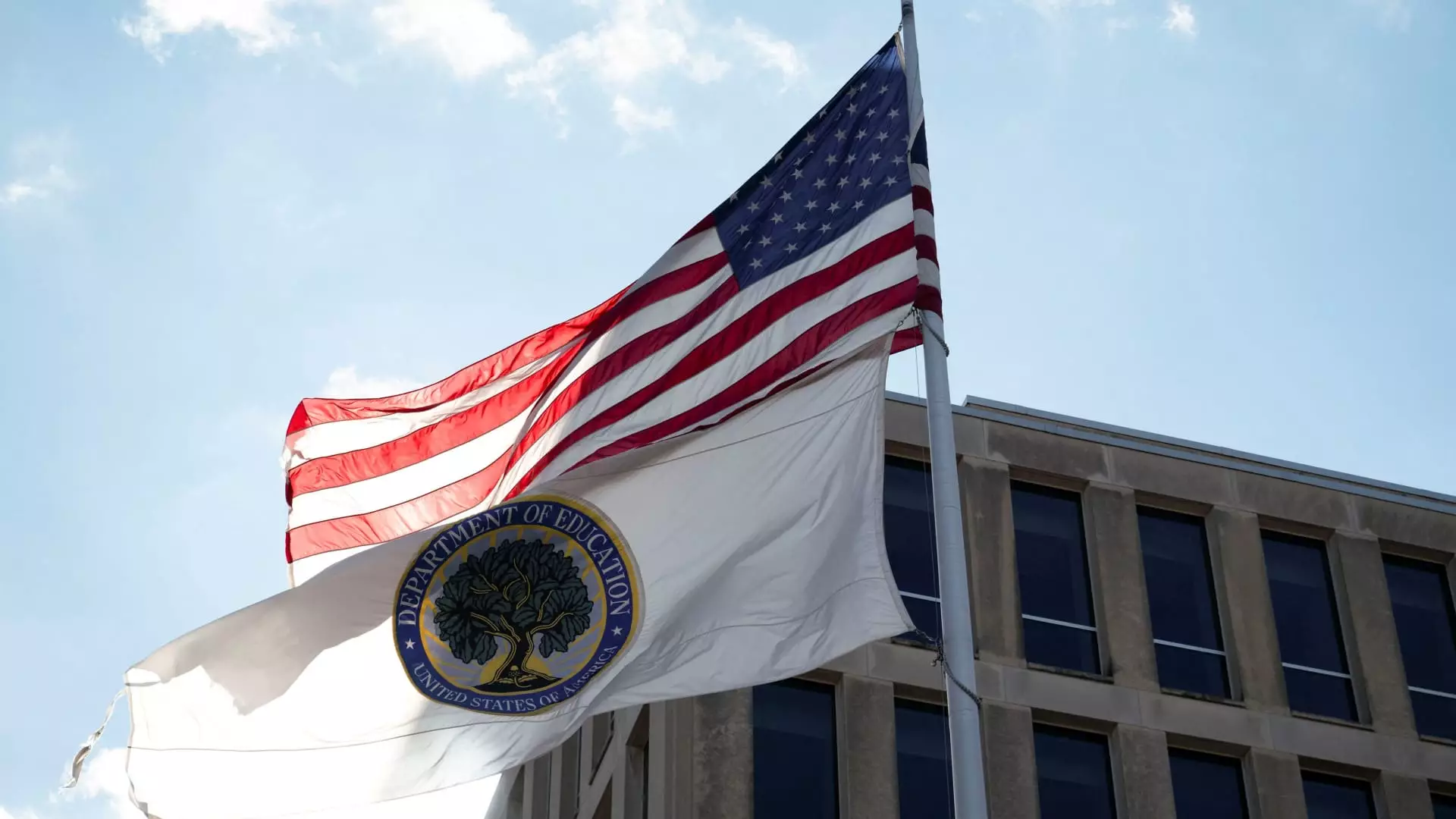The landscape of higher education in the United States is undergoing seismic shifts, particularly in the realm of federal student loans and the institutions that manage them. With discussions within the Trump administration concerning the potential closure or restructuring of the U.S. Department of Education, there exists a palpable anxiety among the approximately 42 million federal student loan borrowers. The situation invites scrutiny not just of potential policy changes but of their broader implications for millions relying on educational funding to pursue their academic ambitions.
The U.S. Department of Education, established by former President Jimmy Carter in 1979, undertakes a variety of crucial functions, including the underwriting of student loans that allow individuals access to college and graduate school. Additionally, the department is responsible for overseeing a staggering $1.6 trillion in outstanding educational debt. As the Trump administration weighs options, including possible executive actions aimed at dismantling parts of this federal entity, concerns about the stability of financial aid services have surged.
Betsy Mayotte, the president of The Institute of Student Loan Advisors, notes that the anxiety levels among borrowers are understandably high. “The stakes are significant,” she asserts, emphasizing that a mere restructuring of the department could leave many feeling insecure about the management and repayment of their debts. While experts suggest that congressional action would be required to completely eliminate the department, the prospect of an executive order introduces uncertainty, given President Trump’s indications that he intends to fulfill campaign promises prioritizing the department’s reevaluation.
Historical context reveals that the Department of Education has faced challenges before; presidents like Ronald Reagan and Donald Trump have attempted to minimize its role, with discussions of merging it with the Department of Labor and more. Polling data from Data for Progress indicates that a significant majority—61%—of likely voters oppose the use of executive orders to abolish the department, highlighting a rift between the administration’s aspirations and public opinion. The disparity of 34% support underscores a critical disconnect that could impede the pursuit of radical policy shifts.
Even if efforts to dismantle the department advance, the practicalities of managing federal student loan debts prompt deeper questions. For instance, Mayotte points out that the mere transfer of management does not alter the contractual obligations associated with existing loans, nor does it eliminate debt owed by borrowers. Instead, the transfer process could yield confusion and complications for both current and future students relying on these crucial financial resources.
If the Department of Education were to be defunct or its powers redistributed, several government departments, such as the Treasury Department or even the Justice Department, may take up the mantle of administering student loans. This transitions raises alarms for consumer advocates. They argue that privatizing the federal student loan system could dismantle essential protections currently afforded to borrowers under federal guidelines. In this increasingly convoluted framework, the prospect of transferring oversight could exacerbate the already existing challenges in the student loan system.
Michele Shepard Zampini from The Institute for College Access and Success articulates a growing concern: “Borrowers and students need more stability, and this would create chaos.” The potential for delays in student aid disbursements for new and returning students is particularly alarming. “People can’t go to college without student loans, unfortunately,” she points out, indicating the precarious position of many families dependent on timely financial assistance.
Moreover, financial aid delays could have a cascading effect on enrollment numbers and broader access to higher education. Mark Kantrowitz, a noted higher education expert, resonates with this concern, stressing: “Disruption is bad, very bad.” Such instability, particularly in an educational landscape where funding is integral to accessibility, is likely to be deeply felt across communities and institutions.
The discussions surrounding the fate of the Department of Education underscore a larger narrative about the future of education in the U.S. The tightening grip of financial uncertainty requires a reconceptualization of how education is funded and managed. Borrowers await clarity while policymakers grapple with the implications of drastic changes in governance. As the clock ticks and uncertainty looms, the fate of federal student loan borrowers hangs in the balance, urging all parties involved to consider the immediate repercussions of their decisions on millions aspiring toward higher education. In these challenging times, the imperative for informed, strategic approaches to educational financing has never been more critical.

